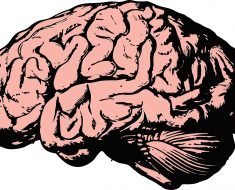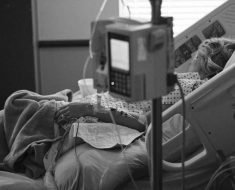Every year, about 40,000 Americans are afflicted with Bell’s palsy, a temporary paralysis of the facial muscles that can manifest as muscle twitching and drooping at the corners of the mouth and eyelids.
While recovery usually occurs within weeks, sufferers spend that time struggling with the physical challenge of a face that looks different and the psychological strain of having no clear idea what caused it—the prevailing opinion is a viral infection—or when exactly they will get back to normal.
Carroll Ann Trotman is hoping to remove some of that mystery by giving physicians data that leads to better treatment and faster recovery. Trotman, professor and chair of orthodontics at Tufts School of Dental Medicine, is using 3-D cameras to map the physical impact of Bell’s palsy and subsequent recovery in patients. She is using similar 3-D modeling techniques to improve outcomes for cleft palate surgeries.
In her Facial Animation Laboratory, just down Kneeland Street from the dental school, Trotman covers the faces of Bell’s palsy patients with a grid of reflective markers, then records a series of their facial movements over twelve weeks. She then animates the resulting 3-D images, studying how fast individual patients recover and whether recovery is consistent or variable across patients. “It looks like it’s highly variable,” she said.
In addition to the visible symptoms, Bell’s palsy can be accompanied by muscle weakness, headache and pain around the jaw, ringing in the ears, a decrease in sense of taste and changes in the production of saliva or tears. Treatments for the condition—linked to the swelling or compression of a nerve that controls facial muscles—include steroids, facial massage, acupuncture, physical therapy and, in some cases, surgery. For some mild afflictions, no treatment is recommended and the symptoms disappear.
The thirty-four-person study, funded by a two-year, $469,393 grant from the National Institute of Dental and Craniofacial Research, is also designed to observe how patients cope emotionally during the recovery process. Learning this can help physicians better treat not only the physical symptoms but also the psychological effects of the condition. Trotman said she expects the work will lead to other studies in the area of facial paralysis, such as helping to improve treatment by tracking the impact of various palliative interventions.
Trotman is working with a team of physicians from Massachusetts Eye and Ear Infirmary—including Tessa Hadlock, the primary physician treating the 34 patients—and co-investigators from the University of Bath, the University of North Carolina, Carnegie Mellon and Cincinnati Children’s Hospital Medical Center.
Source: Read Full Article





